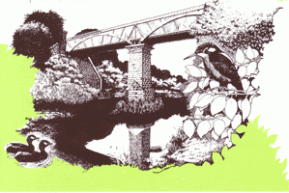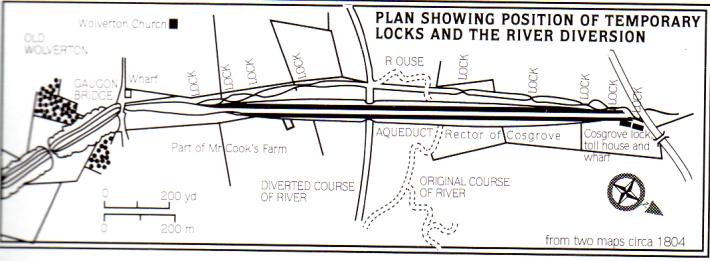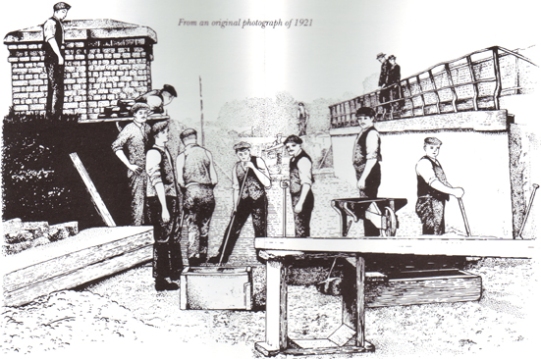The Grand Union Canal, or Grand Junction Canal as it was called until 1929, was built between 1793-1805 to provide a vital link between London and the Industrial Midlands.
The lowest point between the canals’ two summits at Tring and Braunston, was here, at the River Ouse in Wolverton. William Jessop, the engineer for the Canal Company, decided to cross the valley on an embankment with an aqueduct across the river. This avoided the need to build a large number of permanent locks which would have been time consuming, wasteful of water and still would have required a special bridge or ferry for the horses.
A temporary flight of wooden locks was built between Wolverton and Cosgrove, so that the new canal could be used during the construction of the aqueduct. The side of these old locks can still be found in the copse to the west of the canal and south of the river. The present Cosgrove Lock was part of that original flight.
The first aqueduct was built of brick. Work on it proceeded slowly and it was plagued with problems, even before it opened in 1805. It was perhaps no surprise when it collapsed on the night of February 18th 1808, and the temporary locks had to be brought back into use to prevent interruption of trade.
This contemporary report from the “Northampton Mercury” gives an account of the disaster.
STONY STRATFORD FEB 22ND 1805
“On Friday morning last, the inhabitants of this town were thrown into the utmost consternation, by information which arrived from Wolverton, that the large aqueduct arches under the immensely high embankment for carrying the new line of the Grand Junction Canal across our valley, about a mile below this town, had fallen in, and that the river Ouse w\s so dammed up thereby that this town must shortly be entirely inundated to a great depth. On repairing to the spot, however, it was found that one of these arches which had been propped up underneath with timber, soon after the centres were removed, was still standing, and that this one arch, owing to there being no flood in the river, was able to carry off the water of the river as fast as it came down. On examining the other two arches, it appeared, that about 22 yards in length of the middle part of each had fallen in, and blocked up the arches laying the canal above in complete ruins, emptying it as far as the nearest stop-gate on each side, and exposing the remains of 500 quarters of coke or cinders, which the contractors, had laid on the arches. The ends of each of the broken arches were found standing in a crippled state – Most fortunately for the public as well as the Company, the old line of canal and locks across this valley are still remaining and in sufficient repair immediately to convey the barges and prevent interruption to trade but the loss of £400 per month, which we are told has of late been the amount of the extra tonnage received lost to them during the period of rebuilding the arches and repairing the canal over them.



